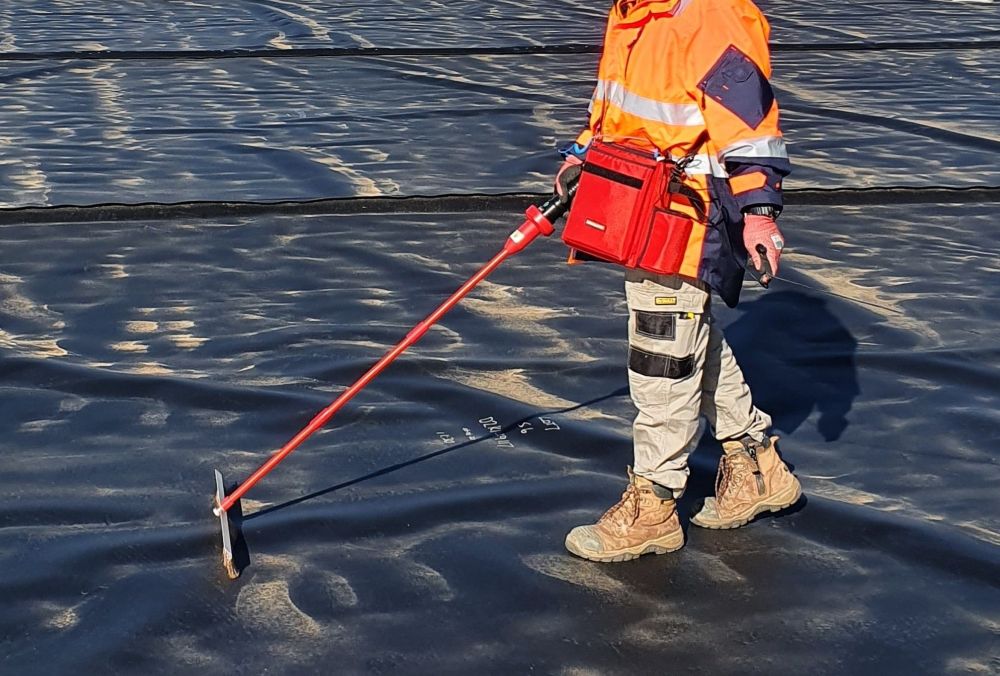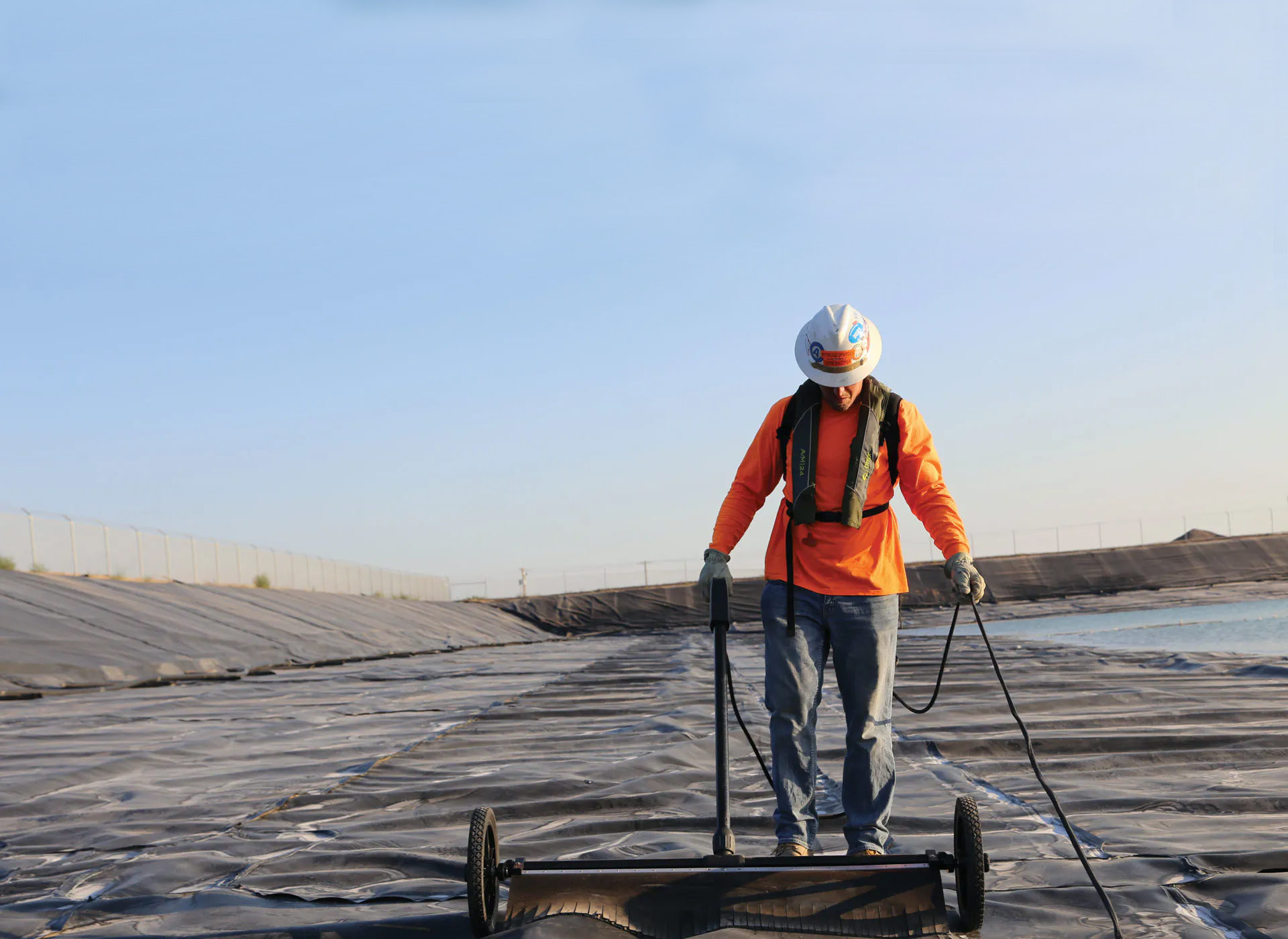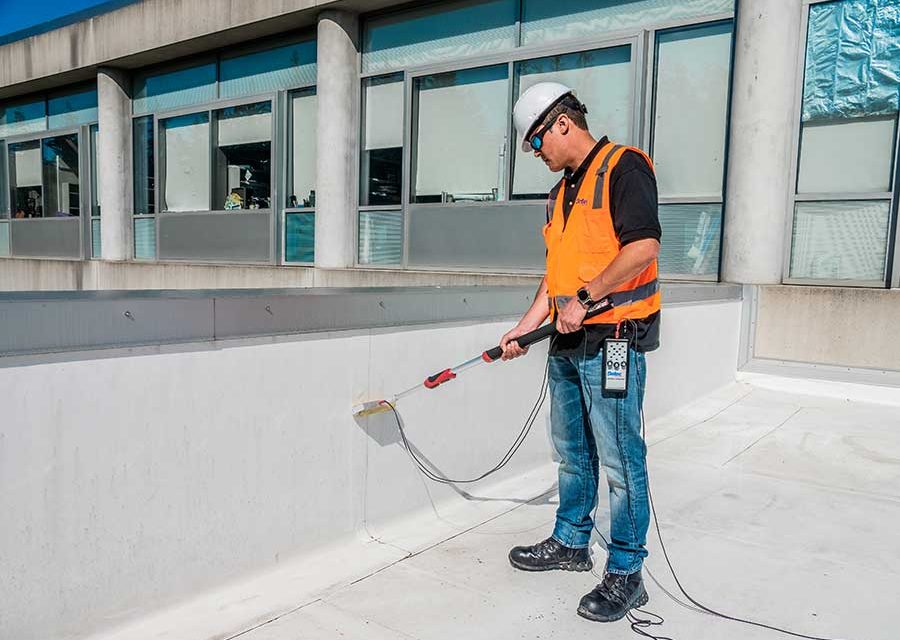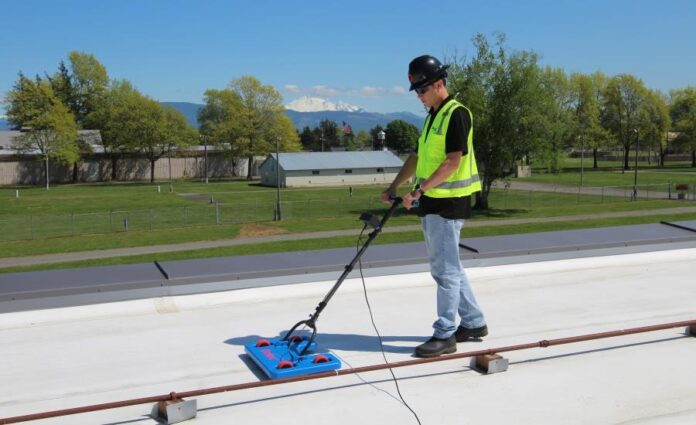Electrical leak detection, often called ELD, is a trusted method for verifying the integrity of geomembrane liners used in landfills, ponds, and mining facilities. For HDPE and LLDPE liners, it confirms that seams and sheets are watertight before the system is covered.
Unlike visual checks alone, ELD finds tiny holes that can lead to major environmental and financial risk. Even a pinhole can become a pathway for leakage over time.
How electrical leak detection works on polyethylene liners

ELD relies on the fact that HDPE and LLDPE are electrical insulators, while the soil or conductive layer beneath them can carry current. A controlled electrical field is created across the liner surface, and a sensor is moved over the area to detect any point where current can pass through a defect.
When a hole or tear exists, current flows through that opening into the conductive layer below, and the detector signals its exact location. This lets repair crews fix defects immediately, which is why learn more CQA engineer is often tied to quality programs that require documented liner verification.
Two test families are used. Water based methods, such as water puddle or water lance, are applied when the surface can be safely wetted, while dry methods, such as arc testing, are used where water is impractical.
Sensitivity is high, commonly detecting defects around one millimeter or smaller if conditions are right. Method choice depends on project stage, access, and safety limits.
ELD methods are commonly used for HDPE and LLDPE

Water puddle testing is used on exposed liners in flat areas. Technicians place a shallow layer of water on the liner, energize it with a probe, and scan for current flow that indicates a leak.
Water lance testing suits larger slopes and textured surfaces. A spray wand delivers a thin conductive film, allowing quick coverage while preserving accuracy.
Arc testing, also called spark testing, is a dry method that uses a high voltage electrode moved over the liner. If a defect exists, the electrode discharges through the hole and produces a visible spark, so it is useful for windy sites or freezing temperatures.
For sites with many pipe boots or penetrations, ELD is often paired with vacuum box or air pressure seam tests. That combination checks both sheet integrity and weld quality before cover material is placed.
Benefits, limitations, and best practice integration

The main benefit of ELD is risk reduction. Finding and repairing defects before burial prevents costly excavation later and protects groundwater and surrounding ecosystems.
ELD also supports compliance with owner specifications and regulations. Many high consequence projects treat electrical surveys as a required acceptance step.
However, ELD does not replace good installation practice. Smooth subgrade prep, careful panel handling, and qualified welding are still the first defense against damage.
Site conditions affect results. A dry or non conductive subgrade reduces sensitivity, so projects may add a conductive geotextile or a moisture conditioned layer beneath the liner.
Testing should be scheduled in phases. Surveys after panel placement, after seam welding, and after repairs catch defects early and prevent reintroduction by later work.
Conclusion
Electrical leak detection gives HDPE and LLDPE liner systems a measurable quality check that goes beyond what the eye can see. When integrated with strong CQA oversight and timely repairs, it helps facilities achieve long term containment performance with confidence.











